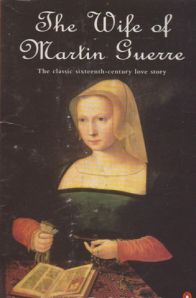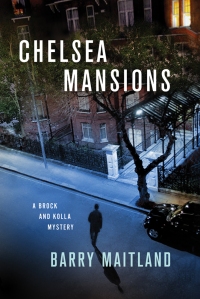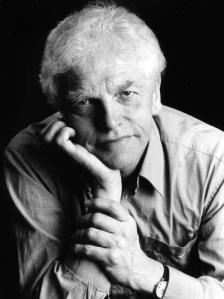Best Books of 2013, a personal view
I guess I can’t postpone it any longer….
Various critics and media outlets have already rendered their judgments. I’ll provide links to those in a subsequent post. Also a reminder: my Best of the Year selections always reflect the best books I’ve read that year, not just those that were published in that calendar year. The list often includes older titles; this year is no exception.
Some months ago, I composed a post in praise of the books I’d enjoyed from January up through June. Rather than providing individual links to those titles yet again, I’ll simply place an asterisk by the ones that I wrote about in that post, which is entitled “June 2013: So far, it’s been a very good year in books.”
As in year’s past, I’ve divided the books into broad categories; within those categories, they’re not in any particular order.
Contemporary Fiction
The Wife of Martin Guerre by Janet Lewis
Out of the Black Land by Kerry Greenwood
The Bookman’s Tale by Charlie Lovett
Life After Life by Kate Atkinson
*The Woman Upstairs by Claire Messud
*A Possible Life by Sebastian Faulks
*Sweet Tooth by Ian McEwan
*When the Emperor Was Divine by Julie Otsuko
*The Round House by Louise Erdrich
The Sacred and Profane Love Machine by Iris Murdoch
Comments: The Bookman’s Tale by Charlie Lovett and Life After Life by Kate Atkinson are both books that I probably would not have read had they not been book club selections. I liked them both, particularly the Atkinson title, with its unconventional structure and bursts of brilliant writing. I’ve been listening to it, read superbly by Fenella Woolgar. The Bookman’s Tale, on the other hand, was a dark horse, a title I’d never even heard of. In both of these novels, there’s a great deal of jumping back and forth in time. Although I ordinarily prefer a linear narrative in long fiction, I was not duly put off by this disjointedness in either novel. Both writers made very effective use of the flashback technique, although in the case of the Atkinson novel, the device attained an extraordinary degree of complexity. This was off putting for some readers and might have been for me, had I been reading rather than listening.
Here’s an interview with Kate Atkinson:
This year’s classic was The Aspern Papers. Last year’s was The Turn of the Screw. Both are by Henry James, who continues to fascinate by being so brilliantly elusive. I came up what I consider an especially jolly title for a post on The Aspern Papers: “Henry James, Master of Suspense.” What! You may exclaim, Henry James lumped in with the likes of James Patterson, Scott Turow – even, Heaven help us, Dan Brown??!! Now, now, replies Your Faithful Blogger soothingly, not quite. But the creation of suspense in both of the above mentioned narratives is artful and extreme, and in the case of Turn of the Screw, downright terror inducing.
I’ll have more – much more – to say about The Sacred and Profane Love Machine in a later post. This was actually a rereading for me, as I read this novel when it first came out in the mid 1970s. I just finished it – again – about an hour ago. Suffice it to say for the moment that I am once again in thrall to the sheer brilliance of Iris Murdoch.
Nonfiction
The Unwinding: An Inner History of the New America, by George Packer
How To Read Literature, by Terry Eagleton
I Hate To Leave This Beautiful Place, by Howard Norman
*The Lady in the Tower: The Fall of Anne Boleyn, by Alison Weir
*Give Me Everything You Have: On Being Stalked, by James Lasdun
*The Long Exile: A Tale of Inuit Betrayal and Survival in the High Arctic, by Melanie McGrath
*Poets in a Landscape, by Gilbert Highet
Comments: Somehow I never got around to writing about Howard Norman’s book. I Hate To Leave This Beautiful Place is a riveting, beautifully written memoir with surprising Jewish content (surprising – in a welcome way – to me, at least) and a shocker of a final chapter.
Crime and Suspense
Oh boy…
For a while now I’ve maintained that where fiction is concerned, the best plotting, characterization, and writing are currently to be found in this genre. My reading for this year has done nothing to dissuade me from that position; rather, it has served to reinforce my view on the subject.
The Silence of the Wave by Ganrico Carofiglio
The Tooth Tattoo by Peter Lovesey
A Murder of Quality by John LeCarre
The Ghost Riders of Ordebec by Fred Vargas
Eva’s Eye by Karin Fossum
*The Caller by Karin Fossum
Gift Wrapped by Peter Turnbull
Play Dead by Bill James
Evil Eye by Joyce Carol Oates
The Frozen Shroud by Martin Edwards
Murder as a Fine Art by David Morrell
Death of the Black-Haired Girl by Robert Stone
*The Golden Egg by Donna Leon
*The Blackhouse by Peter May
Missing Persons by Stephen White
*Chelsea Mansions by Barry Maitland
*The Bedlam Detective by Stephen Gallagher
*Act of Passion by Georges Simenon
*Hit Me by Lawrence Block
*A Foreign Country by Charles Cumming
*A Private Inquiry by Jessica Mann
*A Dark Anatomy by Robin Blake
*Good Bait by John Harvey
*Murder Must Advertise by Dorothy L. Sayers
Boundary Waters by William Kent Krueger
White Heat by M.J McGrath
Pardonable Lies by Jacqueline Winspear
How the Light Gets In by Louise Penny
Deadly Virtues by Jo Bannister
Comments: Two of the above were a pleasant surprise: A Murder of Quality by John Le Carre and Murder As a Fine Art by David Morrell. I hadn’t realized that LeCarre’s first two novels feature George Smiley, or that A Murder of Quality is actually a murder mystery in the classic mode rather than a novel of espionage. Furthermore, of LeCarre’s twenty-two works of fiction, George Smiley, one of the world’s most famous fictional spies, is the lead character in only six. (See the entry in Stop! You’re Killing me.)
As for Murder As a Fine Art, I must begin these remarks with an admission. At times, I can be a right snob! (You’re shocked, I’ll bet.) When I learned that Morrell’s novel featured Thomas de Quincey as a main character, I was intrigued. Yet I hesitated. Why? Because among his other literary accomplishments, David Morrell is the creator of Rambo! Was I going to read a novel by the writer who gave us this:  ?? Obviously the answer is yes. Morrell’s take on De Quincey’s is solidly based on biographical fact. Thomas De Quincey was a strange and fascinating man, and David Morrell has written a terrific literary thriller. (I especially loved Emily, De Quincey’s indefatigable daughter and champion.)
?? Obviously the answer is yes. Morrell’s take on De Quincey’s is solidly based on biographical fact. Thomas De Quincey was a strange and fascinating man, and David Morrell has written a terrific literary thriller. (I especially loved Emily, De Quincey’s indefatigable daughter and champion.) 
Here’s the entertaining, juiced up video trailer:
Here’s one of my favorite De Quincey quotes:
‘Pleasant it is, no doubt, to drink tea with your sweetheart, but most disagreeable to find her bubbling in the tea-urn.’
At present, there seems to be something of a vogue for Thomas De Quincey. The above quotation appears at the beginning of The Invention of Murder: How the Victorians Revelled in Death and Detection and Created Modern Crime, a magisterial survey by Judith Flanders that I’m most eager to read. In addition, De Quincey is referenced – in quite a delightful way – in The Frozen Shroud by Martin Edwards. And The English Opium Eater: A Biography of Thomas De Quincey by Robert Morrison came out in 2010. I’ve read the first essay in De Quincey’s notorious work On Murder Considered As One of the Fine Arts, and I can tell you: as outrageous as you think it might be, it’s even more so.
This was a good year for historical mysteries. In addition to Murder As a Fine Art, I thoroughly enjoyed The Bedlam Detective by Stephen Gallagher and A Dark Anatomy by Robin Blake. All three of these novels brought England’s past vividly to life.
For sheet entertainment value, I’m indebted as always to Bill James and Lawrence Block. I’m a long time fan of James’s Harpur and Iles series. I’ve been reading Lawrence Block for years, but with his newest series character, hit man John Keller, Block has achieved a whole new level of excellence. And that’s saying something for this veteran, a prolific and highly accomplished writer.
In this video, Block provides background to the creation of Keller:
I’m also grateful Charles Cumming, who showed me in A Foreign Country that it’s possible to create n espionage tale with a plot I can actually follow and characters I genuinely care about. Finally, as a crime fiction aficionado who panics periodically about the future of the British police procedural, I deeply appreciate the offerings of Peter Lovesey (Peter Diamond), Peter Turnbull (Hennessey and Yellich), Martin Edwards (Daniel Kind and Hannah Scarlett), and Barry Maitland (Brock and Kolla). Please keep those books coming; I’m depending on you!
I’m barely half way through Louise Penny’s How the Light Gets In, but I want to place it on this list anyway. It’s a splendid return to form after its exasperating and sluggish predecessor (The Beautiful Mystery) and I’m loving it.
************************
There’s plenty of good reading here, but if you pressed me as to which books affected me especially deeply, I would have to say:
The Sacred and Profane Love Machine
The Long Exile
A Murder of Quality
The Tooth Tattoo
Act of Passion
I’d like to single out three titles that stayed with me long after I’d finished them: The Silence of the Wave by Gianrico Carofiglio, Gilbert Highet’s Poets in a Landscape, which itself reads like poetry, and finally The Wife of Martin Guerre by Janet Lewis, which is not only a great historical novel but a great novel period and one of the profoundest explorations of the mystery of the human heart that I know.
******************************************************************
Author Gallery








































Carol in Maryland said,
December 13, 2013 at 4:49 pm
Very interesting post, Roberta. BUT – I had gotten my library request list down to 95 and I am now forced to reach the limit again by adding some of these fascinating titles!
kdwisni said,
December 13, 2013 at 5:31 pm
Like Louise Penny’s A Beautiful Mystery, the latest Peter Diamond outing takes you right inside the minds of extraordinary musicians–in this case, a British string quartet rather than Canadian monks. The detective himself is basically clueless about classical music, but it matters not a whit. I’ve always been fond of this series, but the most recent entry is absolutely superb on all counts: plot, setting, and characters. If there’s anyone on your Christmas list who loves chamber music, you couldn’t go wrong with Tooth Tattoo.
Angie Boyter said,
December 13, 2013 at 8:23 pm
I agree with Kay BTW, but my comment is about Life after Life. Both you and Kay liked it quite a bit, so I’ll say to you both that the premise was so off-putting (as in it sounded DUMB to me, to be honest) that I didn’t even want to TRY reading it. Why did you like it?
On the other hand, there are several titles here that immediately were added to my TBR list.
I am especially glad you liked Murder as a Fine Art. I was quite impressed by the author when I saw him at the Virginia Festival of the book in March.